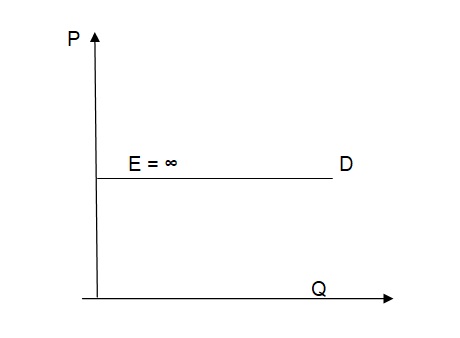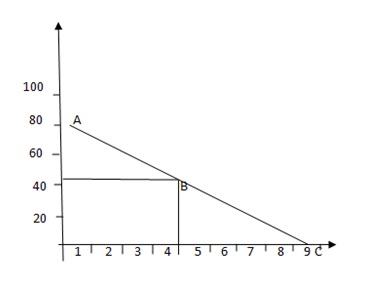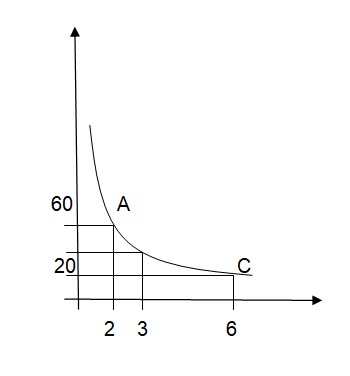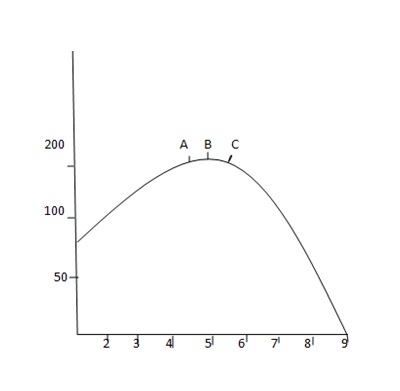Introduction
The significance of both supply and demand in a business setting is that they determine the level of sales or revenue. Thus a firm must understand the factors that affect the supply and demand for its goods. The concept of elasticity is used to predict the influence of variables such as prices on demand and supply. This paper will focus on the concept of elasticity of demand and how it affects business decisions.
Elasticity of Demand
Elasticity of demand is the “degree to which the demand of a good or service varies with its price” (Baumol & Blinder, 2008). Thus it is a measure of the adjustments in demand whenever a commodity’s price increases or reduces.
Cross-Price Elasticity (CPE)
This refers to “the change in the demand of a good that occurs whenever there is a price change in another good” (Baumol & Blinder, 2008). When two goods are substitute, the CPE will be positive. For example, train services are substitute to cars. Thus if the price of cars increases, more customers will use trains for travelling. Consequently, the increase in the price of cars will lead to an increase in the demand for train services. If two goods are complements, then the CPE will be negative. For example, diesel and trucks are complement goods since they are used together. Thus an increase in the price of trucks will lead to a reduction in the demand for diesel.
Income Elasticity
Income elasticity is a measure of the change in demand of a commodity that occurs when the income of the buyers changes but the prices remain constant. It is calculated “as the ratio of the change in demand to the change in income” (Baumol & Blinder, 2008). If the elasticity is more than zero, the goods are considered to be normal. However, if it is less than zero, the goods will be considered to be inferior.
Elasticity Coefficients
Elasticity of Demand
The demand of “a good is perfectly inelastic if the elasticity of demand is equivalent to zero” (Baumol & Blinder, 2008). Thus any price adjustments do not affect demand. Relative inelasticity occurs if the coefficient is more than negative one but less than zero. This means that the “percentage change in quantity demanded will be less than the percentage change in price” (Baumol & Blinder, 2008). The demand is considered to be unitary elastic if its elasticity is equivalent to negative one. The demand is relatively elastic if its elasticity is less than negative one but more than negative infinity. This means that “the percentage change in quantity demanded exceeds the corresponding change in price” (Baumol & Blinder, 2008). The demand of a good is considered to be perfectly elastic if its elasticity is equivalent to negative infinity.
Cross-Price Elasticity
A “negative coefficient implies that the goods are complements” (Baumol & Blinder, 2008). Thus a change in the price of a good causes a reduction or an increase in the demand of its complements. The commodities will be substitutes if the coefficient is more than zero. This means that the demand will be influenced by price adjustments in alternative goods. The goods will “be perfect substitutes if the coefficient is equivalent to positive infinity” (Baumol & Blinder, 2008). Two goods are said to be independent if the cross-price elasticity is equivalent to zero. This means that an increase or decrease in the price of a commodity will not influence the demand of another commodity.
Income Elasticity
A “negative coefficient implies that the goods are inferior” (Baumol & Blinder, 2008). Thus their demand will reduce as the buyers opt for better goods due to an increase in their income. A positive coefficient implies that the goods are normal. Thus their demand will increase as the buyers’ income increases. A necessity good is associated with a coefficient that is less than one while superior goods are associated with coefficients that are greater than one.
Contrast
The difference between elasticity of demand, cross-price elasticity and income elasticity is that they focus on different variables when measuring the change in demand (Baumol & Blinder, 2008). For example, cross-price elasticity focuses on how the demand of a good is affected by the change in the price of other goods. Income elasticity focuses only on how an increase or decrease in buyers’ income affects demand.
The significance of this difference is that it enables entrepreneurs to perform a detailed analysis on the changes in demand. Since the price of a good, the price of other goods and buyers’ income affect demand in varying proportions, a single measure can not be used to predict their influence on demand. Thus it is important to have a specific measure for the effect of each variable in regard to changes in demand.
Determinants of Elasticity of Demand
Availability of Substitutes
The availability of substitutes prompts buyers to switch to other commodities even if the price changes are minor. Thus the demand “of a good is more elastic if many substitutes are available” (Baumol & Blinder, 2008).
Share of Consumer Income Devoted to a Good
The demand will be more elastic if the price of the commodity represents a greater share of the consumer’s income (Baumol & Blinder, 2008). However, it will be less elastic if the price represents only a small percentage of the consumer’s income.
Consumer’s Time Horizon
The demand will be more elastic if the price change lasts for a long time. This is because the consumers have the time to look for substitutes (Baumol & Blinder, 2008). However, if the price change last for a very short time, the demand will be less elastic.
Examples of Determinants
Availability of Substitutes
The demand for postal services tends to be more elastic since there are several alternatives (substitutes) of sending text messages such as emails. This affects the pricing of postal services. Due to the elasticity of the demand, a postal corporation must take in to account the prices of other means of sending text messages before making a decision on the price of its services.
Share of Consumer’s Income Devoted to a Good
The demand for air transport tends to be more elastic due to the high price of air tickets. This influences the decisions made by airlines in regard to their operations. In response to the elasticity of demand, airlines focus on improving their efficiency in order to reduce the price of air tickets.
Consumer’s Time Horizon
When the price of diesel increases the manufacturers that use it will continue to buy it in the short term. However, in the long-term they are able to make a decision on how to cope with the high price. This is because they have enough time to invest in production plants that use cheap sources of energy such as coal. Thus demand for diesel will be more elastic if the price change last for a long time.
Perfectly Elastic Demand Verses Perfectly Inelastic Demand
A perfectly elastic demand can be illustrated by the figure below

- P: price
- E: elasticity of demand
- D: demand
- Q: quantity demanded
In the above figure, the elasticity of demand is represented by the demand curve’s gradient (slope). Since the curve is horizontal, its slope is equivalent to infinity. This means that any price change irrespective of its magnitude will translate into a very large (infinite) “change in quantity demanded” (Baumol & Blinder, 2008).
A perfectly inelastic demand can be illustrated by the figure below

- P: price
- D: demand
- E: elasticity of demand
- Q: quantity demanded
In the above figure, the elasticity of the demand is represented by the demand curve’s gradient (slope). Since the curve is vertical, its slope is equivalent to zero. This implies that an increase or decrease in price will not have any influence on demand. Therefore, the difference between a perfectly elastic and a perfectly inelastic demand is that a price change in the former leads to a great change in demand while a price change in the later cause no change in demand.
Relationship between Elasticity of Demand and Total Revenue
Elasticity Range
This is denoted by the distance between A and B in the figure below (demand). In this area, the gradient of the curve is more than negative infinity but less than negative one. Since the demand is elastic between point A and B, the “percentage change in quantity demanded” (Baumol & Blinder, 2008) will be more than the corresponding change in price. This means that the total revenue will reduce if the price is increased. However, it will increase if the price reduces.
Inelastic Range
This is denoted by the distance between point B and C in the figure below (demand). In this area, the gradient of the curve is more than negative one but is less than zero. Since the demand is inelastic, the “percentage change in quantity demanded” (Baumol & Blinder, 2008) is less than the corresponding change in price. Thus a rise in total revenue will be realized if the price is adjusted upwards. The reverse will occur if the price is adjusted downwards.
Unitary Range
The unitary elasticity range is illustrated by the demand curve in figure 2. In this case the unitary elasticity range is between point A and C. This is represented by the distance between point A and C on the total revenue curve. Since the elasticity is unitary in this area, the “percentage change in quantity demanded” (Baumol & Blinder, 2008) is equivalent to the corresponding change in price. This means that the demand will not be influenced by any adjustments in price. Thus the total revenue will not change in the event of a price change.



Reference
Baumol, W., & Blinder, A. (2008). Microeconomics: principles and policy. New York: Cengage Learning.
